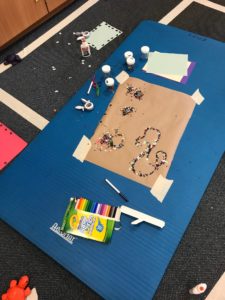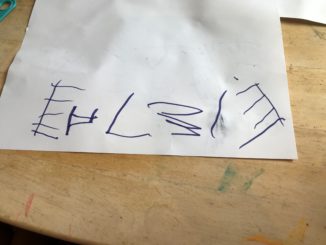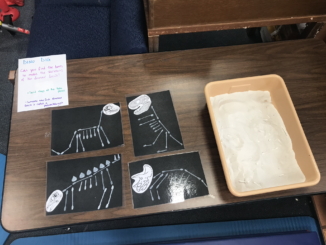Process art, as opposed to product art, usually doesn’t produce an end result — a “product” — that looks pretty or neat or send-home-able. It might be messier, more about exploring texture or materials than making an end result.
One defense of product art is often that it targets fine motor skills in a way that process art doesn’t. That can be the case. When kids are required to cut out a certain thing, or glue something on in a certain way, or draw according to certain guidelines, that does challenge their fine motor skills, and potentially stretch and improve them.
I think process art can be the same way, though. Squeezing glue bottles is resistive strengthening work for little hands. Cutting and hole punching challenges hand strength and two-handed coordination. Freely drawing challenges children to move their hands according to their own imagination, not just what’s required of them.

Here we drew lines and designs on the paper with markers, and then traced those marker lines with glue, and then traced them again with sequins and glitter and hole-punched confetti from other papers. There wasn’t a beginning and an end point set out ahead of time for this process. It was just a child-led, collaborative, exploration.
I’ve been trying to expand into more and more of that. I have several reasons for that. But one of my reasons is that, if I leave enough quiet child-led space for a child to really pick up play and direct it according to what they imagine, then I know that they’re also flexing the skill that they need to be able to do that on their own time…in their own play at home, in their own free time at school.
If I spent that same 30mins having them do a worksheet, I know for absolute certain that they will work on that worksheet for a maximum of 30mins and then never replicate that skill on their own time. But if I give them the space for play, they might carry that play over, and over, and over again. It might inspire new forms of play, it might organically grow. It might become a true, meaningful, occupation to them, rather than a homework. And that’s what occupational therapy is supposed to be.



